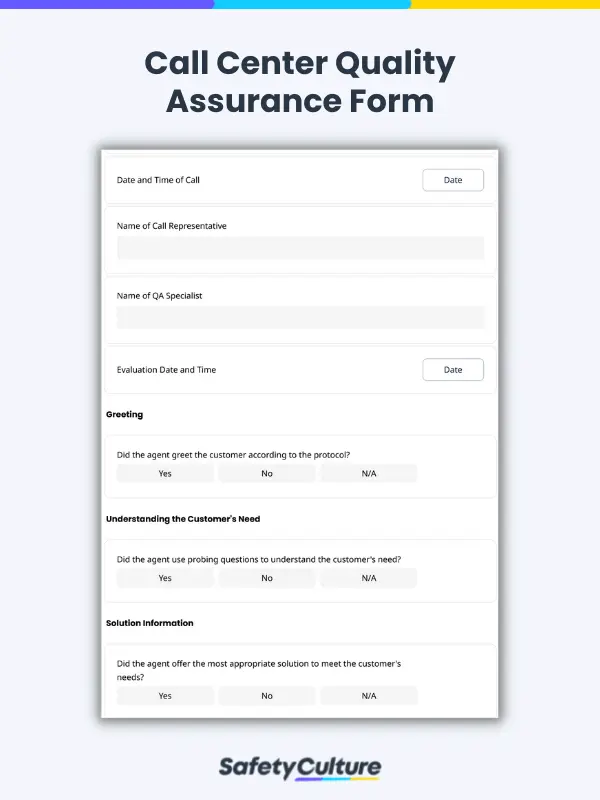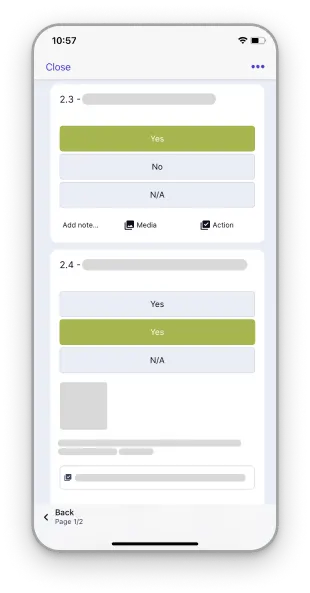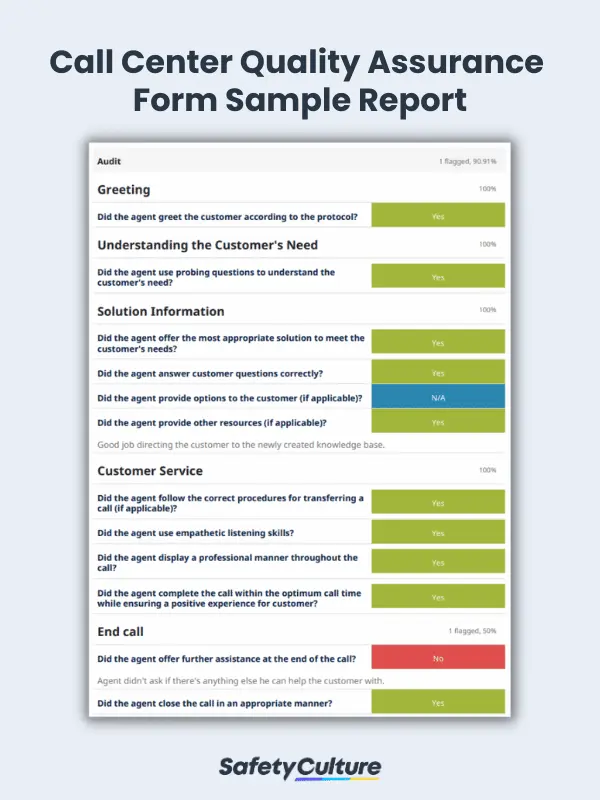What are Call Monitoring Forms?
Call monitoring forms, also referred to as call center quality assurance forms, are tools used by Business Process Outsourcing (BPO) companies and quality assurance teams to assess the calls of representatives and help set a benchmark to sustain the level of call quality and call handling across call centers.
Call quality monitoring forms help QA analysts by setting a standardized means of identifying areas for improvement, recognizing best practices, recording observations, and providing feedback that can help further improve the performance of call center representatives, enhance customer satisfaction, and boost customer experience.
Benefits
Using a call center monitoring form can bring many benefits not only to your organization’s operational efficiency, but also to your employees and your customer. Some benefits include:
- Ensuring the quality of customer service
- Identifying problems more effectively
- More direct and targeted coaching and training for employees who struggle with certain practices
- Setting more personalized, attainable, and specific goals per employee, team, and organization based on the findings of the call monitoring form
- Recognizing and praising exemplary performances
- Satisfying customers more frequently
What to Include in a Call Monitoring Form
Typically, a call monitoring form contains fields for the following:
- Customer details
- Date and time of call
- Name and details of call representative
- Name of quality specialist
- Date and time of evaluation
- Evaluation of greetings
- Evaluation of understanding customer concerns and needs
- Evaluation of solutions provided
- Evaluation of how the end of the call was handled
- Overall evaluation of customer service
- Observations or recommendations
At the end of the form, it would be best to include a signature field. This will help ensure the authenticity of the evaluation, as well as properly document the evaluation process.
Going digital would be the best way to create, manage, and use a call monitoring form, as it can better streamline work operations and quality management processes. With a digital tool, you can save time and money, allocating more resources for more important tasks and improving your services.
How to Create and Use It
With the number of calls customer services receive daily, it is important to follow a methodical approach in monitoring and evaluating them. Creating a standardized technique in call monitoring not only allows businesses to streamline their daily process but also helps them measure the quality, improvement, and success of calls more accurately. Start a call center monitoring plan with the following steps:
Specify goals
Before creating a call monitoring plan and an evaluation process, emphasize the purpose clearly and define the goals to be achieved. With that said, keep in mind to align set goals in accordance with the company’s objectives and general practices. This would ensure that everyone is on the same page and can ease the process of measuring results against initial ideas.
Define assessment criteria
Now that your goals have been defined, it is time to create a comprehensive scoring and evaluation form. It is important you make your form easy to use and access at all times, such as by using a digital form solution that can let you make edits quickly and fill up forms efficiently as you conduct your evaluations.
Gather the right people
To strengthen the monitoring process, involve the right people in collecting, reviewing, and analyzing the data. These stakeholders generally include industry experts and decision-makers like the executive management, managers, or agents.
Select calls to monitor
Create and implement control measures in choosing the calls to be evaluated, develop pre-decided conditions that would help narrow them down. Some of the factors to consider can be along the lines of high-impact calls, high-value prospects, or particular agents.
Analyze the data
To help make sense of the gathered details, create a different set of QA analysts that would sort and analyze the raw data. This could then be used to identify patterns, trends, and other observations that aim to recognize recurring pain points and improve the whole process.
Ensure that employees are on board
In order to implement and manage the monitoring plans smoothly, make sure that they are communicated properly to all involved parties. Give managers and employees a chance to provide comments and ask for clarifications. Also, emphasize the advantages of enforcing a streamlined call monitoring system to all key stakeholders.
Choose the best tool
Lastly, to execute a comprehensive call monitoring procedure, employ the aid of appropriate tools. Using the right tools such as software or digital platforms can increase the consistency, efficiency, and accuracy of how calls are monitored and evaluated.
Call Monitoring Quality Assurance Form Example
Here is a sample of a filled-out call center QA form template for reference:
FAQs about Call Center Monitoring Forms
Usually, for call centers with in-house QA teams, the QA analysts are mostly from the same pool of talents who handled calls and were able to gain expertise over time on the products or services that call center agents are handling. They provide feedback to call center agents and work closely with team managers to help improve team performance and elevate the level of call quality.
In the case of call recording, the best time to conduct call monitoring is soon after a call is made. The earlier that QA analysts provide feedback on areas for improvement, the sooner can call center agents have the opportunity to correct non-compliance.
QA teams ideally have a dedicated area or room where call monitoring can be conducted without disruptive noise and where interruptions can be avoided. Whether the calls being monitored are recorded or live, it is crucial that the QA area helps the QA analysts stay alert and concentrate in order to properly capture everything and be accurate with documentation about the calls being monitored.



